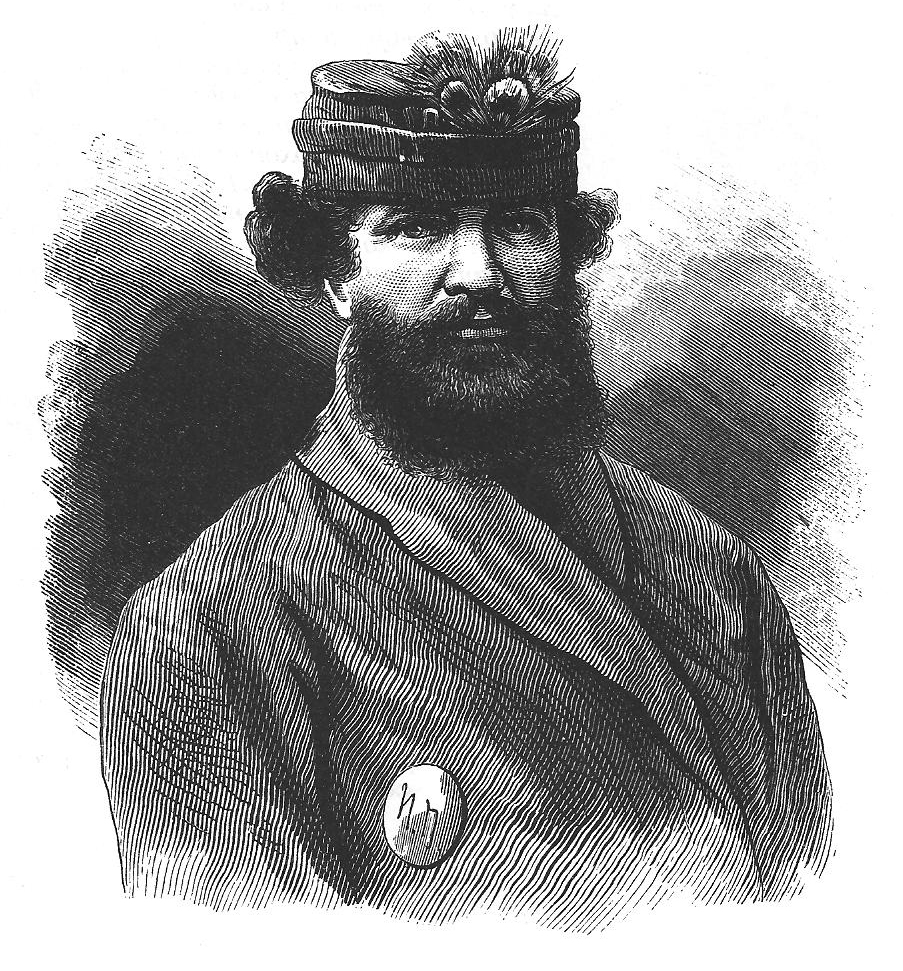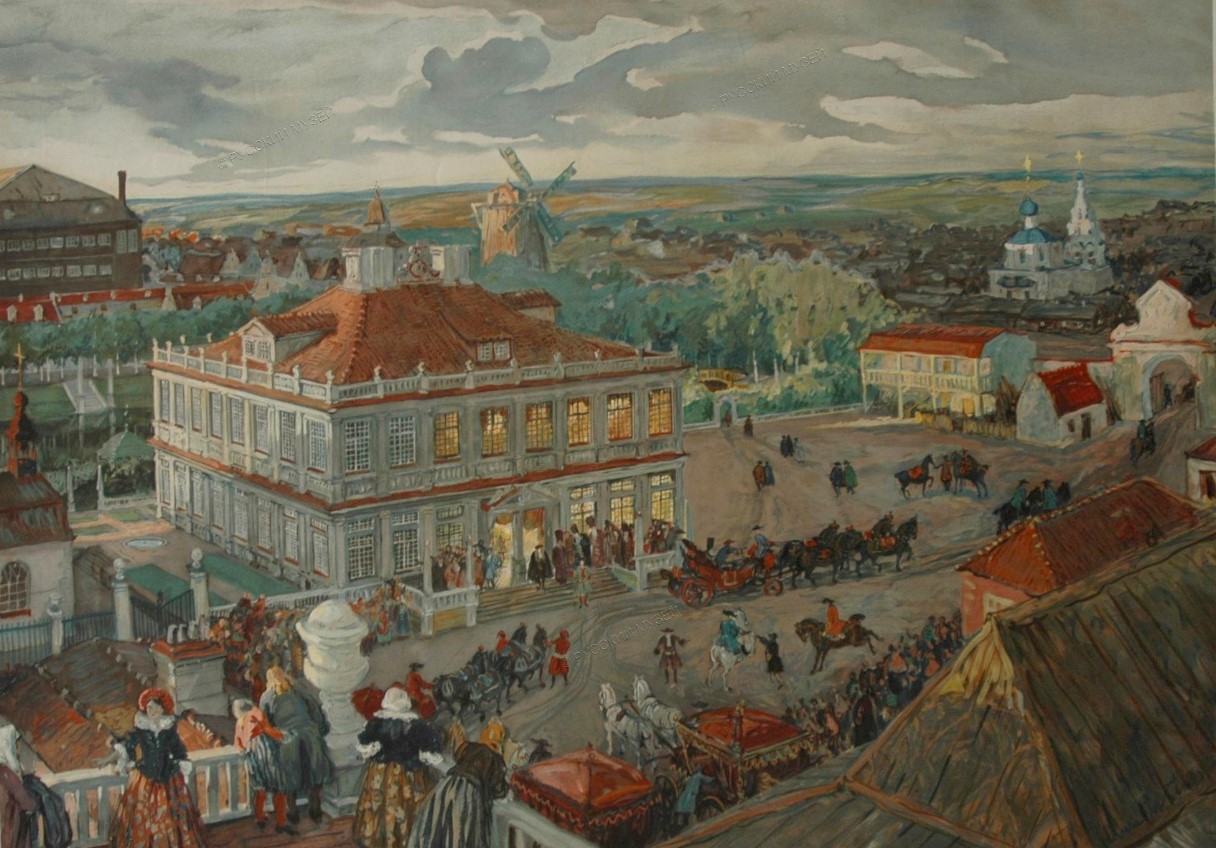|
Yam (route)
Yam ( mn, Өртөө, ''Örtöö'', ''checkpoint'') was a postal system or supply point route messenger system extensively used and expanded by Ögedei Khan and also used by subsequent Great Khans and Khans. Relay stations provided food, shelter and spare horses for Mongol army messengers. Ögedei Khan gave special attention to Yam because Mongol armies travelled quickly; their messengers had to be even faster, and they covered per day. The system was used to speed up the process of information and intelligence. The system was preserved in Tsarist Russia after the disintegration of the Golden Horde. Etymology The name Yam was adopted into most Western languages from Russian, in which it probably is from Mongolian ''yam'' ('ministry' or 'office'). However, in the Mongolian Empire, both the postal system and the individual stations were named ''Örtöö'' (''Örtege in'' Classical Mongolian). Description The Yam operated with a chain of relay stations at certain distances to ... [...More Info...] [...Related Items...] OR: [Wikipedia] [Google] [Baidu] |
Materiel
Materiel (; ) refers to supplies, equipment, and weapons in military supply-chain management, and typically supplies and equipment in a commercial supply chain context. In a military context, the term ''materiel'' refers either to the specific needs (excluding manpower) of a force to complete a specific mission, or the general sense of the needs (excluding manpower) of a functioning army. An important category of materiel is commonly referred to as ordnance, especially concerning mounted guns (artillery) and the shells it consumes. Along with fuel, and munitions in general, the steady supply of ordnance is an ongoing logistic challenge in active combat zones. Materiel management consists of continuing actions relating to planning, organizing, directing, coordinating, controlling, and evaluating the application of resources to ensure the effective and economical support of military forces. It includes provisioning, cataloging, requirements determination, acquisition, distrib ... [...More Info...] [...Related Items...] OR: [Wikipedia] [Google] [Baidu] |
Marco Polo
Marco Polo (, , ; 8 January 1324) was a Venetian merchant, explorer and writer who travelled through Asia along the Silk Road between 1271 and 1295. His travels are recorded in ''The Travels of Marco Polo'' (also known as ''Book of the Marvels of the World '' and ''Il Milione'', ), a book that described to Europeans the then mysterious culture and inner workings of the Eastern world, including the wealth and great size of the Mongol Empire and China in the Yuan Dynasty, giving their first comprehensive look into China, Persia, India, Japan and other Asian cities and countries. Born in Venice, Marco learned the mercantile trade from his father and his uncle, Niccolò and Maffeo, who travelled through Asia and met Kublai Khan. In 1269, they returned to Venice to meet Marco for the first time. The three of them embarked on an epic journey to Asia, exploring many places along the Silk Road until they reached Cathay (China). They were received by the royal court of Kublai Khan, ... [...More Info...] [...Related Items...] OR: [Wikipedia] [Google] [Baidu] |
Stage Station
A stage station or relay station, also known as a staging post, a posting station, or a stage stop, is a place where exhausted horses could be replaced by fresh animals, since a long journey was much faster without delays when horses needed rest. Stage is the space between the places known as stations or stops—known to Europeans as posts or relays. Organised long-distance land travel became known as staging or posting. Stagecoaches, post chaises, private vehicles, individual riders and the like followed the already long-established system for messengers, couriers and letter-carriers. Through metonymy the name stage also came to be used for a stagecoach alone. Posting and staging Purpose Until well into the 19th century an overland traveller anxious to reach a destination as fast as possible depended on animals. Systems of arranging a supply of fresh horses to expedite travel along a particular route had been in use at least as far back as the ancient Romans when they were ... [...More Info...] [...Related Items...] OR: [Wikipedia] [Google] [Baidu] |
Royal Road
The Royal Road was an ancient highway reorganized and rebuilt by the Persian king Darius the Great (Darius I) of the first (Achaemenid) Persian Empire in the 5th century BC. Darius built the road to facilitate rapid communication on the western part of his large empire from Susa to Sardis. Mounted couriers of the Angarium were supposed to travel from Susa to Sardis in nine days; the journey took ninety days on foot. Course of the Royal Road The course of the road has been reconstructed from the writings of Herodotus, archeological research, and other historical records. It began in Sardis near the Aegean coast of Lydia, traveled east through Anatolia (crossing the Halys according to Herodotus), and passed through the Cilician Gates to the old Assyrian capital Nineveh in upper Mesopotamia, then turned south to Babylon. From near Babylon, it is believed to have split into two routes, one traveling northeast then east through Ecbatana and then along the Silk Road (via the Gre ... [...More Info...] [...Related Items...] OR: [Wikipedia] [Google] [Baidu] |
Pony Express
The Pony Express was an American express mail service that used relays of horse-mounted riders. It operated from April 3, 1860, to October 26, 1861, between Missouri and California. It was operated by the Central Overland California and Pikes Peak Express Company. During its 18 months of operation, the Pony Express reduced the time for messages to travel between the east and west US coast to about 10 days. It became the west's most direct means of eastwest communication before the first transcontinental telegraph was established (October 24, 1861), and was vital for tying the new U.S. state of California with the rest of the United States. Despite a heavy subsidy, the Pony Express was not a financial success and went bankrupt in 18 months, when a faster telegraph service was established. Nevertheless, it demonstrated that a unified transcontinental system of communications could be established and operated year-round. When replaced by the telegraph, the Pony Express quick ... [...More Info...] [...Related Items...] OR: [Wikipedia] [Google] [Baidu] |
Inca Road System
The Inca road system (also spelled Inka road system and known as ''Qhapaq Ñan''Qhapaq=rich, powerful, opulent, wealthy, privileged; ñan=road, way, path, route. Source "Diccionario quechua - español - quechua" Gobierno Regional Cusco - Cusco – Second edition, 2005 meaning "royal road" in QuechuaMartínez Martínez, Guadalupe (2010). Qhapaq Ñan: el camino inca y las transformaciones territoriales en los Andes Peruanos - Arqueología y Sociedad, Nº 21, 2010 – www.revistasinvestigacion.unmsm.edu.pe/index.php/Arqueo/article/download/12277/10985) was the most extensive and advanced transportation system in pre-Columbian South America. It was at least long. The construction of the roads required a large expenditure of time and effort. The network was composed of formalKrzanowski Andrzej. Observaciones acerca de la construcción y el trazado de algunos tramos del camino inca en los Andes peruanos - Kraków, Poland - http://www.farkha.nazwa.pl/contributions/pcnwa/cnwa/CNWA2.4.p ... [...More Info...] [...Related Items...] OR: [Wikipedia] [Google] [Baidu] |
Gavrilov-Yam
Gavrilov-Yam (russian: Гаври́лов-Ям) is a town and the administrative center of Gavrilov-Yamsky (or Gavrilov-Yamskiy) District in Yaroslavl Oblast, Russia, located on the Kotorosl River. Population: History The first mention of a settlement on the site of modern Gavrilov-Yam dates back to 1545. Then it was a small village of Gavrilovo, in which there were only 7 courtyards and it belonged to the Varnitsky Trinity-Sergius Monastery. At the end of the 16th century, by decree of Tsar Ivan the Terrible, the village was renamed into Gavrilov Yam, later into Gavrilov-Yamskaya Sloboda, and at the end of the 18th century, in connection with the construction of a stone church - and into the village of Gavrilov-Yam. Town status was granted in 1938. In the early 2000s, the weaving production of the Moscow-based factory, Trekhgornaya Manufactory, was transferred to the oblast to which the town belongs. The Gavrilov-Yamskiy Flax Mill traces its history back to the Lokalov texti ... [...More Info...] [...Related Items...] OR: [Wikipedia] [Google] [Baidu] |
Sloboda
A sloboda ( rus, слобода́, p=sləbɐˈda) was a kind of settlement in the history of the Old Russian regions Povolzhye, Central Russia, Belarus and Ukraine. The name is derived from the early Slavic word for "freedom" and may be loosely translated as "(tax-)free settlement"."Sloboda" '''' (1890–1906) In modern Russia, the term is used to denote a type of a rural locality in |
Prikaz
A prikaz (russian: прика́з, ''prikaz''; , plural: ) was an administrative, judicial, territorial, or executive office functioning on behalf of palace, civil, military, or church authorities in Muscovy and in Russia from the 15th to the 18th centuries. The term usually suggests the functionality of a modern "ministry", "office" or "department". In modern Russian, ''prikaz'' literally means an "order". Most of the prikazes were subordinated to the Boyar Duma. Some of them (palace prikazes (russian: links=no, дворцовые приказы, ) were subordinated to the ''taynyi prikaz'' or ''pervyi prikaz'', which answered directly to the tsar. The patriarch of Moscow and All Russia had his own prikazes. History Originally, prikazes were created by private orders (russian: приказ, prikaz) given by the tsar to a certain person. The functions of the prikazy would be led by boyars and professional administrators. From 1512, the term "Prikaz" started to be used to refer t ... [...More Info...] [...Related Items...] OR: [Wikipedia] [Google] [Baidu] |
Paiza
A paiza or paizi or gerege ( xng, Гэрэгэ, mn, Пайз, fa, پایزه ''pāiza'', ''páizi'') was a tablet carried by Mongol officials and envoys to signify certain privileges and authority. They enabled Mongol nobles and officials to demand goods and services from civilian populations. Although only someone with a paiza was required to be supplied with mounts and served specified rations, those carrying military rarities used the yam even without a paiza. The officials and nobles of the Mongol Empire issued paizas unofficially and abused civilians. Therefore, Ögedei Khan (r. 1229–1241) prohibited the nobility from issuing paizas and jarliqs. To attract foreign or overseas merchants and talents, the Great Khans gave them paiza exempting them from taxes and allowing them to use relay stations. Most of these merchants were business partners of the Mongols, known as ortoq. However, Möngke Khan (r. 1251–1259) limited notorious abuses and sent imperial investigators to ... [...More Info...] [...Related Items...] OR: [Wikipedia] [Google] [Baidu] |
Roman Empire
The Roman Empire ( la, Imperium Romanum ; grc-gre, Βασιλεία τῶν Ῥωμαίων, Basileía tôn Rhōmaíōn) was the post-Republican period of ancient Rome. As a polity, it included large territorial holdings around the Mediterranean Sea in Europe, North Africa, and Western Asia, and was ruled by emperors. From the accession of Caesar Augustus as the first Roman emperor to the military anarchy of the 3rd century, it was a Principate with Italia as the metropole of its provinces and the city of Rome as its sole capital. The Empire was later ruled by multiple emperors who shared control over the Western Roman Empire and the Eastern Roman Empire. The city of Rome remained the nominal capital of both parts until AD 476 when the imperial insignia were sent to Constantinople following the capture of the Western capital of Ravenna by the Germanic barbarians. The adoption of Christianity as the state church of the Roman Empire in AD 380 and the fall of the Western ... [...More Info...] [...Related Items...] OR: [Wikipedia] [Google] [Baidu] |


.jpg)





